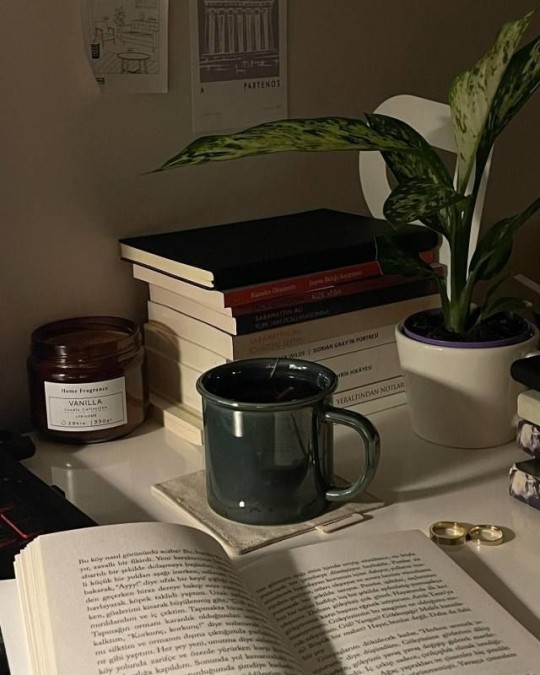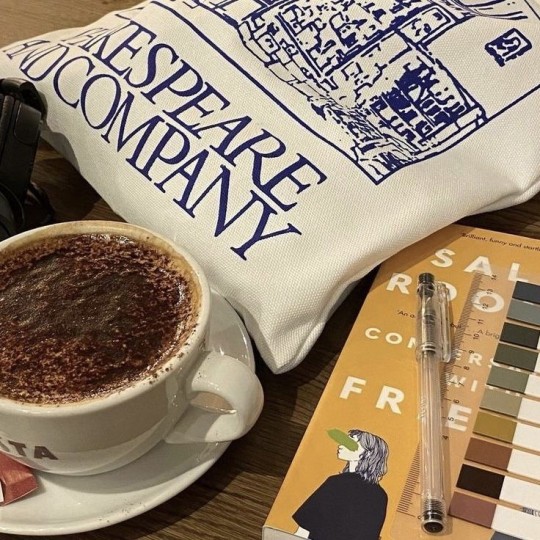Text
A reminder
Please take a little bit of time to stroll through a nearby park!
7 notes
·
View notes
Photo

January, fragment of a mosaic with the months of the year. First half third century CE. Discovered in the city of Thysdrus, Roman province of Byzacena, (modern El Djem, Tunisia). Collection of the Archeological Museum of Sousse. Photo: ©Ad Meskens, 2012 via Wikimedia Commons (X). License: Creative Commons Attribution-Share Alike 3.0 Unported
This scene of two cloaked figures greeting each other before the statue of a Lar likely commemorates the Compitalia, a festival honoring the Lares compitales. guardian spirits of the neighborhood.
199 notes
·
View notes
Text


Amethyst figurine of the goddess Taweret, Egypt, 18th Dynasty, 1500-1392 BC
from Phoenix Ancient Art
1K notes
·
View notes
Text

[image description: the following lines from the a.s. kline translation of Aeneid 10:
Aeneas spoke to faithful Achates:
"Supply me with spears, those that lodged in the bodies
of Greeks on Ilium's plain: my right hand won't hurl
any at these Rutulians in vain."
/end description]
the way it is literally the same set of weapons used in the trojan war. it is the same weaponry it is the same war history is a washing machine cycle of the same blood being spilled over and over
263 notes
·
View notes
Text
i strongly & emphatically reject the concept that any greco-roman authors are 'timeless' in that i think it's important to approach their writings as objects borne of their culture and social context like any others. that said i do think reading thucydides as a teen was formative for me in a good way because i will so often see a political argument and be like 'oh its just the melian dialogue again'. because people have just kept having the melian dialogue forever and ever
2K notes
·
View notes
Photo

The skull of the Magdalene at St Maximin in France
36K notes
·
View notes
Text

Viktor Vasnetsov - Prince Ivan on the Grey Wolf (1889)
259 notes
·
View notes
Photo




a real beast of a week is almost overrr (just have a 7h shift tomorrow left heh)!!! i’ve written a lot and read a lot, and even managed to edit my journal article!!
765 notes
·
View notes
Text
"My father had taught me to be nice first, because you can always be mean later, but once you've been mean to someone, they won't believe the nice anymore. So be nice, be nice, until it's time to stop being nice, then destroy them."
~ Laurell K. Hamilton, A Stroke of Midnight
3K notes
·
View notes
Text
On Madness, Medieval History, and Vulfoliac the would-be-Stylite
barbreyryswells replied to your post: “although we admit that in some cases these…
but how were they insane
How indeed? And that is the question, an important one, that really ought to be asked more often by historians. In his assumption-laden, logically roudabout way Michel Foucault addressed it in his book ‘Madness and Civilization’, but to say the least, Foucault’s intellectual approach has some holes in it, and I wish somebody would really take on this subject.
[I think as a contemporary believing Muslim, this will be particularly relevant to you. (not because of the Muslim part, because of the contemporary believing part)]
We are talking about a world, and to an extent this was true not just in Christendom but in the Islamic Middle East as well, where respected leaders of the community could claim to have received divine visions, conversed with historical and transhistorical figures, seen terrible and awesome spectacles, and were not only taken seriously by a significant number of people, but their extraordinary (and what we might call 'mad’ if they happened today) ideas and experiences leant them greater influence and authority.
Generally, in the medieval period, madness was like heresy - it was in the eye of the beholder. In both cases in Western Europe, the lens was the ever-shifting doctrine of the institutionalized Catholic Church, though even this was really only true around the 12th and 13th centuries, when major efforts were made to centralize church authority (generally in Rome, and the Pope), and ensure universal doctrinal consistency (so that a random undereducated priest in rural southern France wasn’t preaching that the Pope was actually a she-goat, or Christ said that Christians should only wear one shoe - not that these are actual examples but that’s what I mean - this was the primary role of the Medieval Inquisition - making sure that everybody believed the same thing, and correcting error and if all else failed, eliminating heresiarchs before their intellectual poison could spread).
A fantastic example comes from Gregory of Tours, who condemns a certain Vulfoliac for, as far as we can tell, standing atop a column in the middle of the Tourraine region of France shouting at pagans to convert. In so doing, he was (probably consciously) emulating the much-lauded practice of the so-called Stylites of Near East, who attracted enormous followings and commanded near universal respect for their ascetic lifestyle (they lived on a column, with meager food delivered, or sometimes, manna from heaven). But in this context, Bishop Gregory represented a part of the institutionalized church of 6th century France. Vulfoliac was operating outside the control and umbrella of officially sanctioned evangelical efforts (The official reason was that the weather of the Tourraine was too harsh for a stylite culture to exist). What Symeon did was laudable spiritual purification, what Vulfoliac did was spiritual presumption. So Gregory says he was made to come off of his column and join a monastery (which may also indicate that Gregory was sensitive to the desires of the lingering pagan elements in his own society, since it was them Vulfoliac was harassing).
Western, post-Enlightenment thinking tends to condemn the entirety of the medieval period as 'irrational’ or 'ignorant’ (which alone among these is accurate, though not to the extent many claim) 'superstitious’ or particularly 'credulous’. There is a definite condescension that implies, we, as a society, as a species, have moved past that sad and unfortunate chapter of our history. Obviously I think that attitude is garbage, for a whole number of reasons. Even today we have atheists who make a point to emphasize with the fervor of evangelical Christians how their non-belief is superior and more logical and rational than the silly beliefs of those who chose to see a divine hand at work (from any religious tradition).
So the reason I love that quote so much is that it implicitly calls all of those ridiculous and hubristic assumptions into question. 'Well, maybe we think they were suffering from a, b, c psychiatric conditions.’ But in the context of the actual world being studied, and in the context of religious movements of today, what a bunch of presumptuous 'enlightened’ intellectuals say about visionaries and mystics to discredit their importance in a historical and cultural context, no matter what the time period or culture in question, means less than nothing.
You don’t understand humanity by excluding irrationality.
9 notes
·
View notes
Text
Dark academia letter inserts ideas
(medieval literature and religion edition)
A bookmark or postcard with an image of a medieval artwork or manuscript page;
A mini-print or sticker of an icon or painting of a female saint or mystic, such as Hildegard of Bingen or Julian of Norwich;
A small packet of incense or a tea bag with a note that refers to the use of incense or herbal teas in medieval religious practices. I'd go for vanilla, cinnamon, or lavender.
A handwritten quote from the book that you recently read and found particularly interesting or inspiring, and/or a personal reflection on how this book has affected your own thinking.
A small charm or talisman, such as a crucifix or a feather.
A mini-zine or booklet that you made, featuring artwork, poetry, or your own reflections.
A small piece of fabric or ribbon that you've hand-dyed using natural dyes, such as madder or indigo, as a nod to the medieval practice of dyeing textiles with natural materials.
A handwritten letter or note on parchment-style paper, sealed with a wax stamp or a piece of washi tape, as a nod to medieval correspondence.
106 notes
·
View notes
Text
Seattle Public Library is doing this awesome program called Books Unbanned that allows teens and young adults (ages 13-26) access to their collection of e-books and e-audiobooks from anywhere in the USA. All you need to do is fill out a simple form and you get their Books Unbanned card. Please share this information far and wide. I know they're not the only ones to have done this, but the more the merrier!
37K notes
·
View notes









